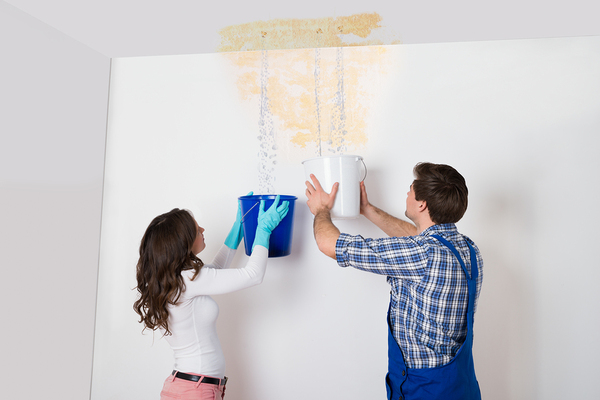Identify A Half-Dozen of Principal Leak Factors Inside Your House
Identify A Half-Dozen of Principal Leak Factors Inside Your House
Blog Article
Just how do you feel in regards to Most Common Causes of Leaky Pipes?

Leaks not just trigger waste of water but can additionally create unneeded damage to your house and promote unwanted natural development. Unfortunately, water leakages could go undetected since the majority of the pipework in our residence is concealed. By recognizing and looking for daily circumstances that create leakages, you can safeguard your home from future leakages and unnecessary damages. Today, we will consider 6 leakage causes that might be causing your pipelines to leak.
Encroaching origins
A lot of water leakages start outside the house instead than inside it. You could observe damp spots or sinkholes in your lawn, and that might imply that tree origins are getting into water lines causing water to leak out.
Corroded water supply
As time passes by, your plumbing system ages and also deterioration such as rust may begin eating away the pipes. This may be the cause of discoloration or warping on your water pipes. This asks for an inspection with your plumber instantly. Think about changing the pipelines considering that they are at a greater risk of deterioration than the more recent models if our plumbing system is old.
Faulty Pipeline Joints
The point at which your pipes connect is often the weakest link in the waterline. Pipe joints can wear away over time, leading to water leakages. The majority of pipeline joints are not quickly visible. If you have loud pipelines that make ticking or banging noises, particularly when the hot water is turned on, your pipeline joints are possibly under a lot of pressure. It is a good idea to have your plumber inspect your system annually.
Instant temperature adjustments.
Severe temperature level adjustments in our pipelines can cause them to increase as well as contract suddenly. This development as well as contraction might trigger cracks in the pipelines, especially if the temperature level are below freezing. It would certainly be best if you kept an eye on how your plumbing works. The visibility of the formerly pointed out situations regularly shows a high risk.
Poor Water Connectors
Sometimes, a leak can be caused by loose hoses and also pipelines that supply your devices. Generally, shifting is what causes the loose water Connections. You could discover when it comes to a cleaning device, a pipe might spring a leakage due to shaking during the spin cycle. In case of a water connections leakage, you may see water running directly from the supply line or puddles around your home appliances.
Blocked Drains
Obstructed drains could be aggravating and also inconveniencing, yet they can sometimes end up causing an overflow bring about rupture pipelines. Maintain getting rid of any products that might drop your drains that might clog them to stay clear of such hassles.
All the above are root causes of leakages but not all water leaks result from plumbing leakages; some leaks may come from roof covering leaks. All leakages ought to be repaired instantly to prevent water damage.
Leakages not only cause waste of water but can also create unneeded damage to your residence and promote undesirable organic development. By recognizing and also looking for day-to-day situations that trigger leaks, you can shield your home from future leaks and unnecessary damage. Today, we will look at 6 leak causes that may be causing your pipes to leak.
At times, a leakage can be created by loosened tubes and also pipes that supply your appliances. In situation of a water links leak, you may notice water running directly from the supply line or puddles around your appliances.
How To Check For Water Leak In Your Home
How To Check for Leaks
The average household's leaks can account for nearly 10,000 gallons of water wasted every year and ten percent of homes have leaks that waste 90 gallons or more per day. Common types of leaks found in the home are worn toilet flappers, dripping faucets, and other leaking valves. These types of leaks are often easy to fix, requiring only a few tools and hardware that can pay for themselves in water savings. Fixing easily corrected household water leaks can save homeowners about 10 percent on their water bills.
To check for leaks in your home, you first need to determine whether you're wasting water and then identify the source of the leak. Here are some tips for finding leaks:
Take a look at your water usage during a colder month, such as January or February. If a family of four exceeds 12,000 gallons per month, there are serious leaks.
Check your water meter before and after a two-hour period when no water is being used. If the meter changes at all, you probably have a leak.
Identify toilet leaks by placing a drop of food coloring in the toilet tank. If any color shows up in the bowl after 10 minutes, you have a leak. (Be sure to flush immediately after the experiment to avoid staining the tank.)
Examine faucet gaskets and pipe fittings for any water on the outside of the pipe to check for surface leaks.
Undetected water leaks can happen without the home or business owner even realizing. If you suspect a water leak, but not able to find the source. It is time to contact a professional water leak detection service, The Leak Doctor.
How To Find a Water Leak In Your Home
https://www.leakdoctor.com/blog/How-To-Check-For-Water-Leak-In-Your-Home_AE197.html

I am just very drawn to How Fast Water Damage Can Ruin Your Home and I really hope you liked my article. In case you enjoyed our post if you please make sure you remember to pass it around. Thanks for taking the time to read it.
Contact Us Today Report this page